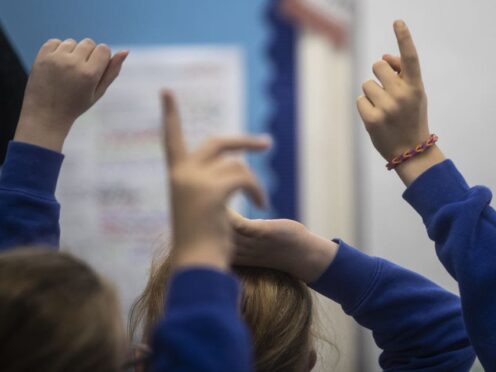
Labour has pledged to “break down the barriers to opportunity” for young people by recruiting more teachers, opening new school-based nurseries and introducing a modern curriculum.
In its General Election manifesto, the party said it will “transform” the education system so young people get the opportunities they deserve.
It pledged an additional 6,500 new “expert” teachers in shortage subjects and more than 3,000 new primary school-based nurseries.
A series of Labour’s education policies would be paid for by “ending tax breaks for private schools”, the manifesto said.
But education unions have called for more action and greater detail on how thousands more teachers are going to be recruited amid concerns about low pay and high workloads in the profession.
Labour has also promised to deliver a curriculum which is “rich and broad, inclusive, and innovative”, and it said it will transform further education (FE) colleges into specialist technical excellence colleges.
The party also pledged to:
– Replace single headline Ofsted grades with a report card system “telling parents clearly how schools are performing”.
– Support children to study a creative or vocational subject until they are 16 and ensure accountability measures reflect this.
– Launch an expert-led review of curriculum and assessment.
– Ensure schools address misogyny and teach young people about healthy relationships and consent.
– Fund evidence-based early-language interventions in primary schools, and improve the quality of maths teaching across nurseries and primary schools.
– Guarantee two weeks of work experience for every young person and improve careers advice in schools and colleges.
– Limit the number of branded items of uniform and PE kit that schools can require to bring down costs.
– Fund free breakfast clubs in every primary school.
– Provide access to specialist mental health professionals in every school.
Pepe Di’Iasio, general secretary of the Association of School and College Leaders (ASCL), said: “The plan to recruit 6,500 more teachers is an important recognition of the major staff shortages faced by schools and colleges, but we need to see more detail on how this is going to be achieved.
“Labour must be willing to address longstanding concerns around pay and conditions for this policy to be a success.
“The policy of charging VAT on private schools is something Labour needs to consider very carefully to fully understand all the possible implications.
“In any case, this is not going to be enough on its own to solve the funding crisis in the education system and there remains a big question over how Labour is going to address this.
Daniel Kebede, general secretary of the National Education Union (NEU), said: “We welcome the fact that Labour recognises we are in a teacher recruitment and retention crisis. The 6,500 new teachers, while a start, does not go far enough.
“The competitiveness of teacher pay and workload has been hit so hard that we have a full-blown teacher recruitment and retention crisis.”

Enjoy the convenience of having The Sunday Post delivered as a digital ePaper straight to your smartphone, tablet or computer.
Subscribe for only £5.49 a month and enjoy all the benefits of the printed paper as a digital replica.
Subscribe